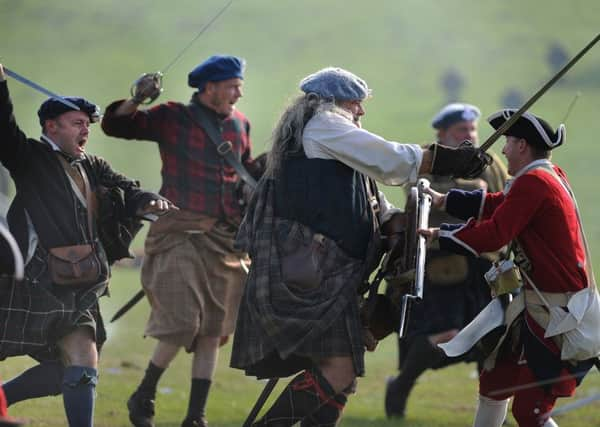Why plans to build road over famous Jacobite battlefield must be stopped – Murdo Fraser


Eleven days ago Perthshire commemorated the 330th anniversary of the Battle of Killiecrankie, which took place on 27 July 1689. This was not, as some people think, a clash between Highlanders and Lowlanders, Catholics and Protestants, or even Scots and English. Rather, it saw a Scottish Government army supporting King William and Queen Mary, consisting mainly of Scots Lowland Regiments but led by a Highlander, General Hugh Mackay of Scourie, facing a mostly Highland Jacobite army fighting in the name of the deposed King James, led by a Presbyterian Lowlander, John Graham of Claverhouse, Viscount Dundee.
The battle was won by the Jacobites, their Highland charge proving irresistible and sweeping away most of Mackay’s army. But it was the classic Pyrrhic victory: Dundee himself falling to a Williamite bullet and dying on the battlefield.
Advertisement
Hide AdAdvertisement
Hide AdWithout their charismatic leader, the Jacobite army continued to Dunkeld, where the town was stoutly defended by the Cameronians led by William Cleland. After a bloody battle on 21 August 1689, the Jacobites were repulsed, and the rebel rising petered out. The Crown was secure for William and Mary.
Standing on the site of the government lines at Killiecrankie today, it is possible to get a sense of what Mackay’s soldiers would have experienced, as they lined up in formation, muskets in hand, sweating in the sun in their red coats, waiting patiently and nervously for hours for the inevitable charge down the slopes by their Highland adversaries. Most of the location of the actual fighting is open land where one can easily walk and follow the development of the battle.
Unfortunately, that may all be about to change. For Transport Scotland’s preferred route for extending the existing A9 single carriageway to a dual one will obliterate much of what remains of the battle site, burying it under tonnes of concrete, tarmac, and earthworks.
For many years I have been a supporter of the campaign to see the A9 made up to a dual carriageway in its entirety from Perth to Inverness. Any study of the accident statistics on this road tells us why such an improvement is necessary. And yet, I have a real concern that the proposal to build the dual carriageway at Killiecrankie will put at risk a historic battle site in an unnecessary fashion.
There is a realistic alternative to extending the A9 dual carriageway on the south side, and that is to widen it to the north, on what is currently open land, further away from the site of Mackay’s government lines. Sadly, Transport Scotland seem determined to push on with their preferred route.
The protection of Scottish battlefields is the statutory responsibility of the government agency Historic Environment Scotland, who originally objected to Transport Scotland’s plans, but subsequently withdrew their objection whilst still expressing concern with what is being proposed. This leaves the only objectors as a group of local residents, who will face a public enquiry on the route, probably later this year. Up against the deep pockets of a government agency, able to pay for expensive lawyers and experts, it would be unwise to hold out too much hope for their chances. So the battlefield at Killiecrankie as we know it today may not exist for many more years to come.
Killiecrankie is not the only famous Scottish battlefield facing challenges from development. At the site of that other great Jacobite battle, Culloden, there have been concerns raised about encroachment on the battlefield by proposed housing developments. Unsurprisingly, questions have been asked as to whether our current planning process provides sufficient protection for historic sites such as these.
Advertisement
Hide AdAdvertisement
Hide AdThe irony is that these threats to our Jacobite battlefields are happening just at the time when there is renewed interest in this period of our history. The success of the Outlander series of books and its TV adaptation is bringing an upsurge of visitors to sites associated with the period. I confess I once tried to watch some of the Outlander series and simply couldn’t get into it, but what do I know? It has been a worldwide, phenomenal success, and Scottish tourism is benefitting as a consequence. Those coming from overseas, and indeed domestic visitors, want to learn more about the Jacobites. They want to visit the castles featured in the TV series. And they have an interest in seeing the battle sites where the Jacobites fought in their doomed uprisings. Meantime, the protections we have in place for sites like Killiecrankie are simply insufficient to secure them for future generations.
I do think it is a sad reflection on today’s Scotland that we seem to have so little regard for our heritage and our historic sites, that we are even considering allowing the construction of a dual carriageway over such a historic location as Killiecrankie. There has been very limited archaeological work carried out on the battle site, and the location of the mass graves that must have been dug for those who fell in combat is still unknown. It seems extraordinary that, despite this, we have a Scottish Government agency determined to pursue a major construction project at this location, particularly when there is a viable alternative which would be less damaging.
I hope that the objectors in Killiecrankie win their fight against Transport Scotland’s preferred route. But if they do so, they will have triumphed against the odds, with next to no support from further afield, and a disappointing lack of interest from the very agency supposed to protect our nation’s heritage. We really should be doing better than this.
